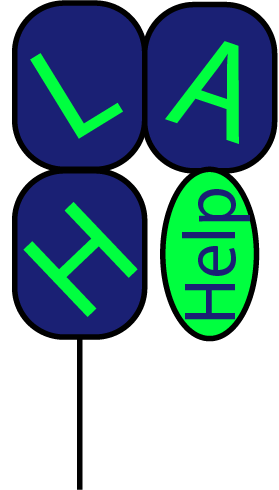Why is the HLA nomenclature system so confusing?
Researchers investigating histocompatibility had no idea what they were walking into, or how expansive their research would become.
The researchers began as separate entities in their own laboratories. Jean Dausset was checking out a glass slide with white cell agglutination in the 50’s at the same time that Rose Payne was investigating hemolytic anemia and D. Bernard Amos was progressing organ transplantation. Paul Terasaki, on the other side of the world, was also digging into transplantation.1 Their interests, along with the interests of many other researchers, ultimately converged.
The researchers in this field of study were passionate and dedicated pioneers. They met up, had some heated discussions, and discovered that their observations were all contributing to a shared pattern of leukocyte reactivity.
This was how the International Histocompatibility Workshop came to be; histocompatibility pioneers from around the world met every few years (or more frequently) to discuss what they had observed in their own laboratories.1 Every workshop introduced new clarifications of reactivity patterns, new result discrepancies and, by the end of each workshop, new hypotheses. Everyone would meet again a few years later only to repeat the process with entirely new discoveries that far outgrew their prior understanding of the HLA system and, therefore, its nomenclature.
The way antigens had previously been named didn’t always leave space for the new stuff. This led to changes in nomenclature that accommodated these new discoveries.
This is what makes the HLA nomenclature a bit of a bear to learn.
The individuals making the rules couldn’t have predicted how expansive the HLA/MHC system would be. Every decade led to a breaking and rebuilding of HLA nomenclature and a new understanding of the HLA system. Testing methods would evolve, researchers would learn something new, but this ultimately led to a new evolution of the naming conventions…again…and again.
If we have a little compassion for science we can recognize that this is the struggle of every learning process; we’re building on what we know and sometimes what we thought we knew wasn’t quite right.
Because of this, our current nomenclature system has leftovers from previous rules and decades that can make our current nomenclature a little confusing. Understanding the history might help you grasp the current system.
There are a lot of nomenclature topics up for debate, including how we might clean up the naming system, but this story is about the HLA nomenclature system as it is now and how it got to this point.
In the Beginning
Imagine you’re in a pitch-black room and something has snagged at your clothing. You’re trying to figure out what it is.
You begin to run a series of tests on this item based on what you know about life and your five senses. You decide to call it “Letty” for simplicity’s sake.

You have a magnet. That magnet, as your scientific test, attaches to Letty.
Because a magnet attached, you hypothesize that Letty is likely made of metal. As you feel around, your fingers tell you that it is square-ish in shape. A pointed tip of it has snagged on your shirt. You can’t bend it. It’s solid and feels smooth with four edges. There’s a smoothness on the topside with indentations and protrusions along those edges, but a semi-smooth texture on the back. Because you just ran into a wall, you can guess what it might be based on what you would expect to hang from a wall.
If you turn on the light, you can clearly see that Letty is a picture frame. And it’s framed with dry macaroni! Your five-year-old made it and it’s awesome. You’re so proud.


Now imagine that you can’t turn on the light, and what you’re holding is not something you have felt (or seen) before; you’re not even sure of its purpose. It’s inside your body and smaller than the visible eye can see, so how do you identify it? You create a characteristic picture of what you think it looks like. You base this picture on how the object acts, on the tests you run, on what you know about those tests, and on what you know about the space that this object is in (in this case, the human body). This was the challenge that confronted HLA researchers, and they rose to the challenge.
Through the Decades
The scientists applied what they knew at any given moment to create a naming convention for the objects they’d found. When they learned something new about the HLA system (for example, discovering cross-reactivity) they would alter the naming system to include their new discovery. It resulted in many changes over time but ultimately created our current system, which could be identified as our most efficient version yet, if you think about it.
Click on the 1950’s decade to get started or jump to your favorite decade to appease your curiosity (I’m adding links as I go, so if they’re not there it’s because I’m still building the page). Keep in mind that this story does build. It’s about progress, so it’s recommended to read through the first time in order if you’re new to the story.
The 1960s: Just Getting Started
The 1970s: Class I, Splits, and Loci Differentiation
The 1980s: Class II and Molecular Nomenclature
The 1990s: Epitopes, Gene Products, and Molecular Quirks (not published yet)
References
- Terasaki PI, Dausset J. Payne R, van Rood JJ, van Leeuwen A, Amos DB, Walford RL, Kissmeyer-Nielsen F, Svejgaard A, Batchelor JR, Bach FH. 1990. History of HLA: Ten Recollections. Los Angeles (CA): The Regents of the University of California.


One Response